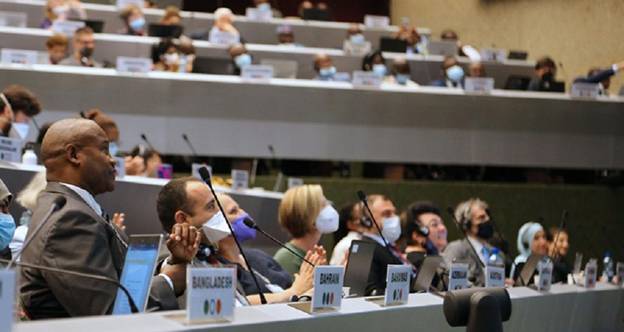Description

Copyright infringement not intended
Context: The 18th meeting of the Persistent Organic Pollutants (POP) Review Committee (POPRC-18) to the Stockholm Convention has included five more chemicals in its agenda.

Details:
- Stockholm Convention is an international environmental treaty that aims to eliminate or restrict the production and use of POPs or the substances that persist in the environment and pose risk to our health.
- The listed chemicals include a pesticide, a flame retardant and some plastic stabilising substances.
- Three of the listed chemicals — chlorpyrifos, chlorinated paraffin beyond prescribed standards and long-chain perfluoro carboxylic acids — were already nominated at the 17th meeting (POPRC-17) in January this year.
- Two chemicals — dechlorane plus, a flame retardant and UV-328, a stabiliser used in some personal care products — which qualified for risk management evaluation at POPRC-17 will be evaluated at this session.
- The UNEP proposal to list chlorpyrifos as POP was resisted by India. Still, chlorpyrifos got nominated as Persistent organic pollutants.
- Chlorpyrifos is not a carcinogen and its concentrations are low. Some of the studies in the POPRC proposal were not peer reviewed.
- The Pesticides Manufacturers and Formulators Association of India (PMFAI) had obstructed listing chlorpyrifos under the Stockholm Convention.
- India had also opposed the decision to list flame retardant dechlorane plus.
- Chlorpyrifos was registered under the Insecticide Act of 1968 since 1977 and Anupam Verma Committee recommended its review for continued use in 2015.
- China and India are among the largest producers of chlorpyrifos. Nearly 48 per cent of chlorpyrifos or 24,000 tonnes was produced in India.
- Globally, some 50,000 tonnes of chlorpyrifos is being used annually, according to estimates by the China Crop Protection Industry Association.
- Nearly 48 per cent of chlorpyrifos, or 24,000 tonnes, was produced in India.
- Some 11,000 tonnes were used within the country and 12,000 tonnes were exported. Around 1,000 tonnes were kept as stockpiles, estimated PMFAI.
- Chlorpyrifos was approved for agricultural use in 2021, which includes its use as a pesticide against pests affecting Bengal gram, rice and cotton.
- It is one of the ten pesticides banned by Punjab and Haryana governments in August 2022.
- “Chlorpyrifos is approved for 18 crops in India, while it was being used for 23 crops,” claimed Pesticide Action Network, in an August report.
- India’s views against the listing of chlorpyrifos may not find much acceptance by the expert committee consisting of 31 experts — from Africa, Asia and the Pacific, Europe, Latin America and the Caribbean.
- The Stockholm Convention has listed 31 chemicalsas of December 2020. This list is likely to expand further amid evidence pointing towards the health burden of hazardous chemicals and pesticides.
- Acute pesticide poisoning is an ongoing major global public health challenge, with about 385 million cases of unintentional acute pesticide poisoning and 11,000 deaths every year.
https://www.downtoearth.org.in/news/pollution/stockholm-convention-to-take-final-call-on-5-persistent-organic-pollutants-85199











